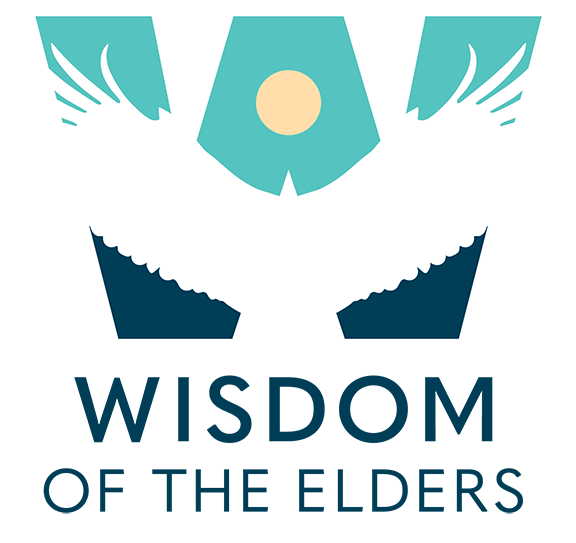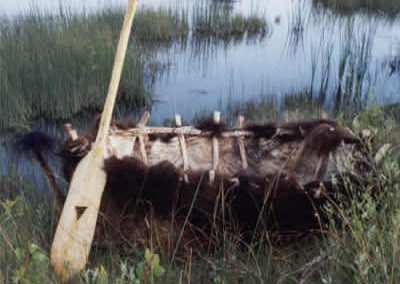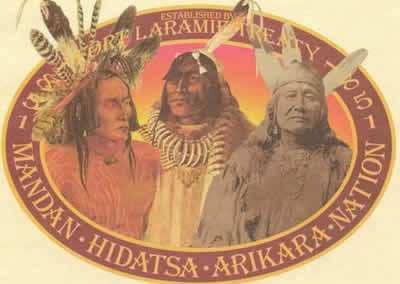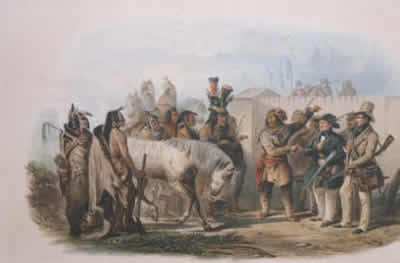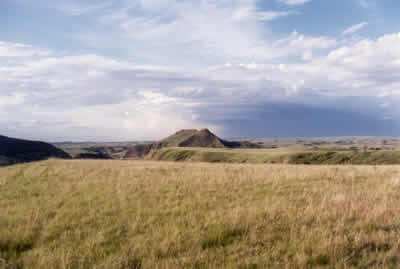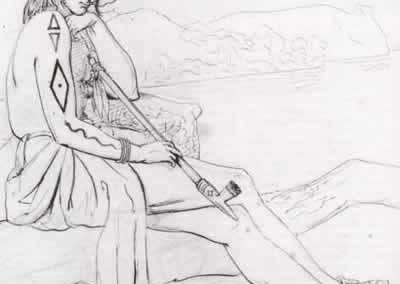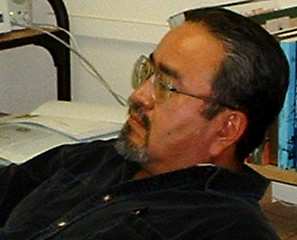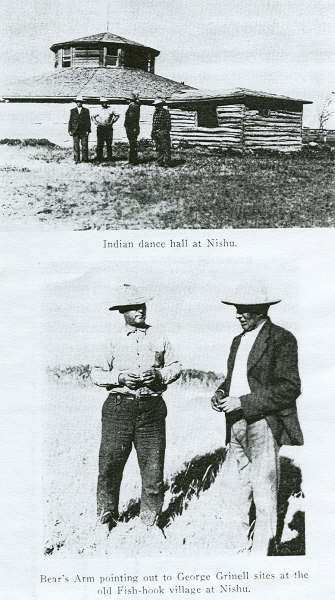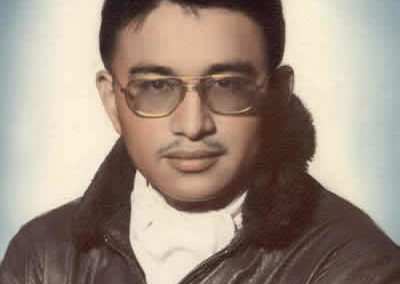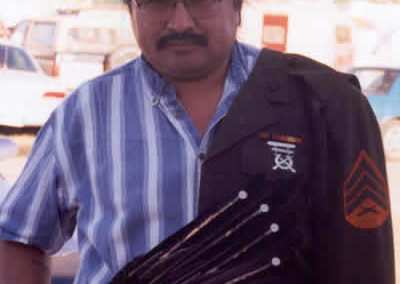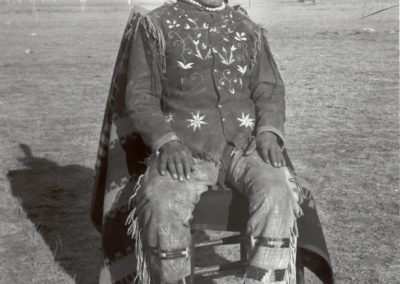Three Tribes in My Blood
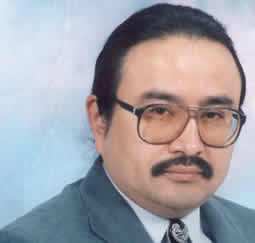 Calvin Grinnell – Hidatsa-Mandan-Arikara
Calvin Grinnell – Hidatsa-Mandan-Arikara
I’m Calvin Grinnell, a member of the Three Affiliated Tribes, the Mandan, Hidatsa, and Arikara Nation. I’m a member of all three tribes. I’ve all three tribes in my blood, as well as a little French, of course. My Indian name is Running Elk. I’m a descendant of the Hidatsa chief, Four Bears, who signed the Fort Laramie Treaty of 1851 delineating the boundaries of our homelands.
There’re not many people who know that, but there are two Four Bears chiefs in our history. Our chief’s named Four Bears. One was Mandan and one was Hidatsa. The Mandan one, of course, being more famous because Catlin and Bodmer painted him. In our history that’s who I’m descended from, as well as sub-chief of Crow Flies High, who was the leader of what was called a dissident band of the Hidatsa who broke away from the reservation system, or refused to come to the reservation, or be captured or encompassed by a reservation. They believe that this area was theirs. So for twenty-five years, Crow Flies High and my grandfather um, Black Hawk, and about a hundred and thirty Mandans, Hidatsas, and one Arikara, I believe, ah, traveled between where we are located today just over the hill. Just to the north of the Four Bears Park is an old village site which is under the water and some of it might be exposed now because the water’s so low.
They established a village there and then traveled between there and Fort Union or Fort Buford for a number of years, like twenty-five years. For twenty-five years they traveled between those and subsisted on the old ways; hunting buffalo and selling wood to the steamboats and fur trading, trapping, or whatever for a quarter of a century. They were kind of a thorn in the side of the government and the military system. They showed that Indian people could still subsist on the old ways, rather than have to become dependent on the government. Our Indian people are pretty resilient, pretty practical. You have to be out here in the northern plains to survive and to make a livelihood.
The rest of the tribe, of course, we’re the first Walmart in the northern plains. We had a nice huge trade network that took advantage of our strategic location, not only on the Missouri River, but we were within easy reach of the French and English traders from the Northeast, the Hudson’s Bay Company, and the Northwest Company who came to trade with our people. We first heard about who the Mandan were through other tribal traders like the Assiniboine and the Cree. In their heyday in the late 1700s, they numbered about fifteen thousand down near the present-day city of Bismarck and Mandan. There were nine villages down there. They regularly took advantage of the Assiniboine and Cree in their trading. They were able to dictate their own terms. We are an old line of business people; I guess you’d call it.
Calvin Grinnell, or Running Elk, is a Hidatsa, Mandan, and Arikara tribal historian. On his father’s side, he is a descendant of Hidatsa Chief Four Bears who signed the Laramie Treaty of 1851 and was then killed in an ambush on or about 1812 by the Sioux. His grandfather on his mother’s side, Black Hawk, a sub-chief of Crow Flies High opposed the reservation system. Three Affiliated Tribes’ half million-acre reservation now surrounds the lower half of Lake Sakakawea in west-central North Dakota. Lake Sakakawea (reservoir) was created by the Garrison Dam back in the 1950s. The land is complemented by high bench lands surrounding the lake. The east side is a good farm and pasture land while the west side is rolling hills and badlands best suited for pasture land.
He has served on the North Dakota State Historical Review Board and the Lewis and Clark Bicentennial State Committee, was a historian for the Three Affiliated Tribes Museum, and is currently a Cultural Preservation Resource Specialist for the tribe. Calvin has testified on behalf of his people before Congress in Washington DC and traveled to Germany to represent them as part of a historic delegation.
Calvin serves as a tribal historian and has researched the tribe’s involvement in the Lewis and Clark Expedition, especially the oral tradition about the Bird Woman, or Sakakawea in the Hidatsa language. His presentations include topics of the native views of Lewis and Clark, including the Hidatsa beliefs regarding Sakakawea’s origin. They claim her as their ancestor and that she was not a Shoshone. He also discusses John Baptiste Charbonneau, the history of the Mandan remnants who were survivors of smallpox epidemics and joined the Hidatsas in the late 1700s. He has a conversational understanding of the Hidatsa language. Some of his traditional obligations include membership in the Hidatsa Water Buster Clan and Red Blanket Man Society of the Eagle Sun Dance.
One of his stories has been on Wisdom of the Elders Radio at www.wisdomoftheelders.org (in Series Two: Program Five – Historical Intro).
Calvin Grinnell, Resource Specialist Cultural Preservation Office Mandan, Hidatsa, Arikara Nation
404 Frontage Road
New Town, ND 58763
cgrinnell@mhanation.com
calvin_grinnell@hotmail.com
calving@rtc.coop
701-627-4781 ex.8084
701-388-1928 cell
